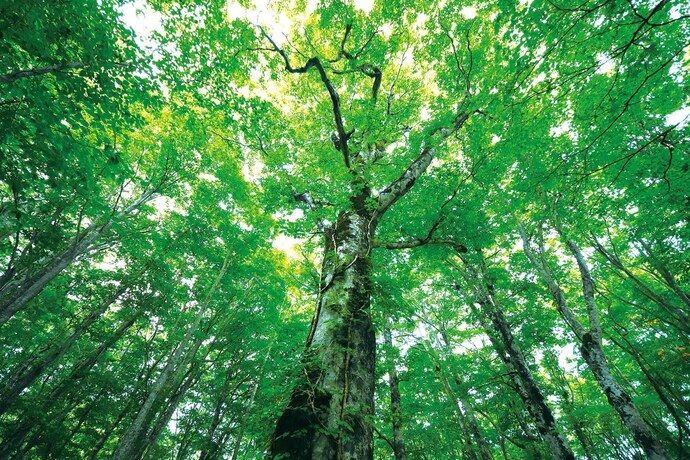Tambara Highlands

Tambara Highlands
At the northern end of the Numata municipal limits, a plateau of volcanic origin rises to 1,600 meters above sea level in the foothills of Mt. Hotaka (2,158 m). This is the Tambara Highlands.
Wilderness enthusiasts flock to the area throughout the year. From May to late October, hikers come to explore the grass- and tree-covered Tambara Wetlands. Elevated boardwalks crisscross a diverse marshland habitat of hundreds of plant and animal species.
Flora and fauna
Notable wetland plants include mizubasho (swamp lantern; Lysichiton camtschatcensis), whose white lily-like flowers bloom immediately after the snow melts, usually from late April through May; hiogi-ayame (bristle-pointed iris; Iris setosa), whose purple blooms appear in June and July; and tamuraso (Serratula coronata), an herb with reddish-purple, densely clustered flowers similar to those of the red clover, which bloom from August to September. Among the animal denizens of the area are the forest tree frog (moriao-gaeru), which lays its eggs in white foam sacks that can be seen sticking to tree branches from May to June; and the Japanese black salamander (kuro-sanshouo), a mostly nocturnal amphibian that grows to a length of 13–15 centimeters.
The routes
The wetlands are a short walk from the nearest parking lot and can be circled in about an hour at an average pace. No hiking equipment is required.
A longer and more challenging path starts from the parking lot and continues uphill into the forest. This trail is steep in places, can be quite muddy after rain, and takes around three hours to complete. It does, however, come with the reward of experiencing the serenity of Tambara’s ancient beech forest, which was logged in the first half of the twentieth century but has recovered well since being left to grow untouched since the 1940s.

ご意見をお聞かせください
このページに関するお問い合わせ
Numata Tourism Department
888 Shimonocho,Numata-shi, Gumma-ken 378-8501
Please use the dedicated form for inquiries






